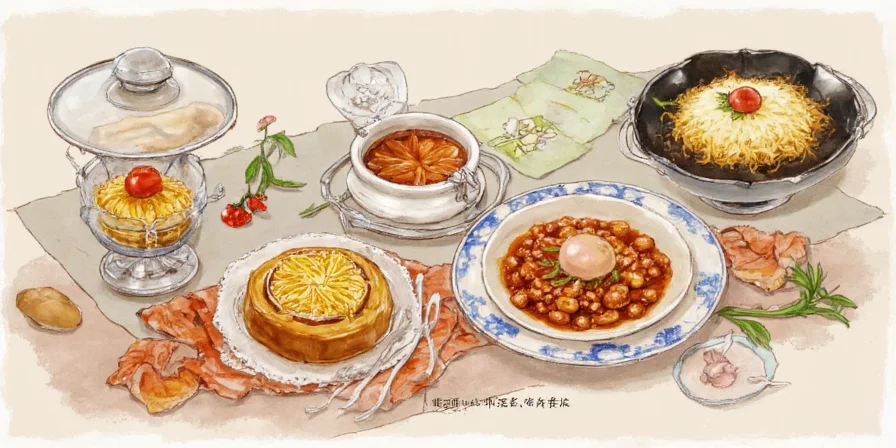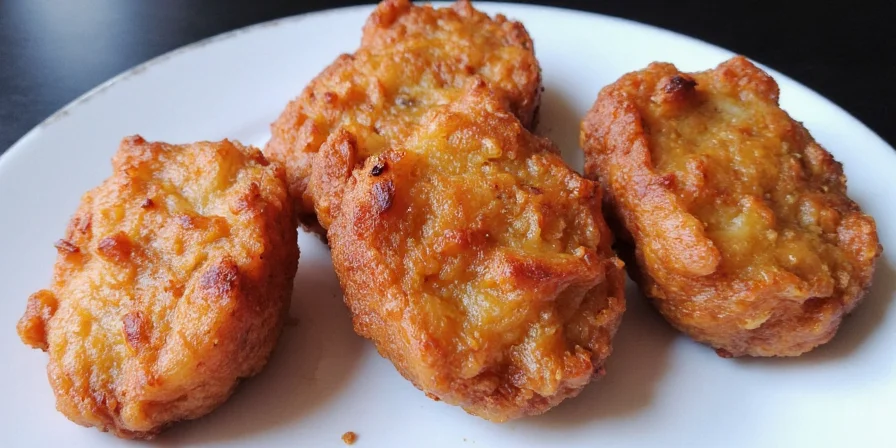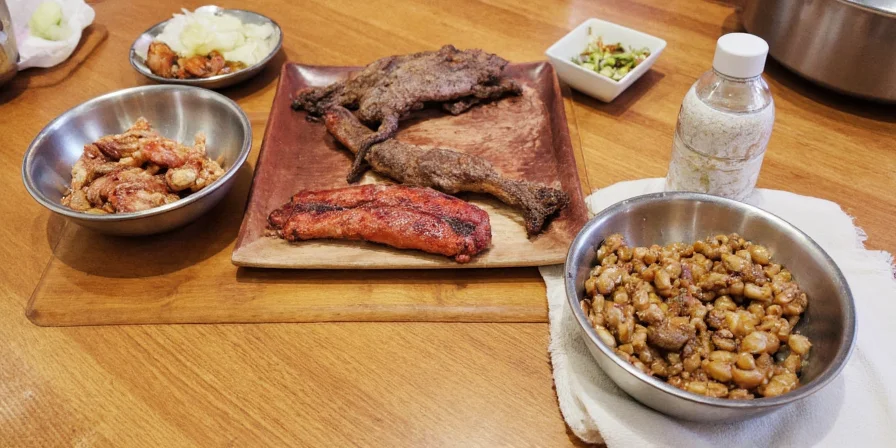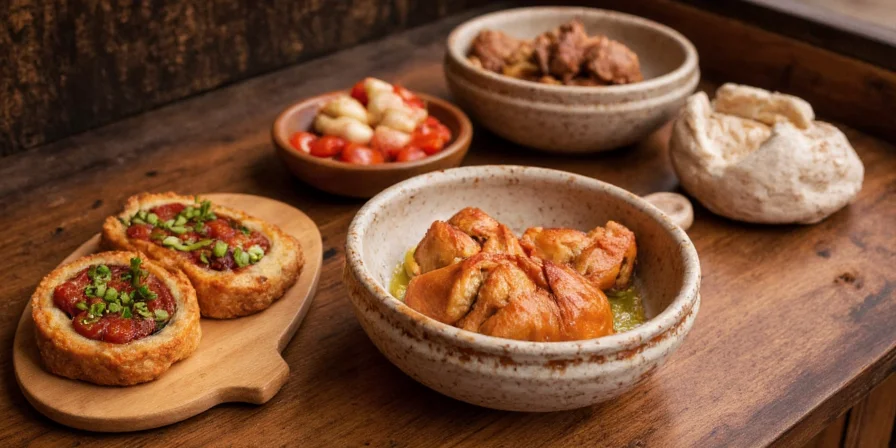5 Spicy Secrets of Mexican Staple Ingredients That Will Blow Your Mind 🌮🔥
Whether you're a seasoned spice connoisseur or just someone who can’t resist a good taco Tuesday spread, Mexican cuisine’s mystical blend of flavors is hard to ignore. In this blog post, we’re going beyond the basics and diving deep into the heart of Mexican staple ingredients — their origins, uses, and how to get the most flavor from them without burning your tongue off!
Table of Contents
- Why Mexican Staples Matter
- Top 5 Mexican Staple Ingredients
- Spice Secrets & Pro Tips
- Visual Guide: Flavor Profiles Compared
- Final Thoughts
Why Mexican Staples Matter
Mexican cuisine isn’t just about chili-laden dishes; it's an art form rooted in thousands of years of tradition. From ancient Aztec markets to modern-day street carts in Mexico City, the same spice-rich staples have endured time, trend, and tourism.

These are not just flavor bombs; they’re also rich in history, culture, and sometimes even health benefits. Let’s explore some of the key players that define the essence of Mexican cooking.
Top 5 Mexican Staple Ingredients You Can’t Live Without
If Mexican food had a Mount Rushmore, these would be its faces:
- Chili Peppers (Ancho, Guajillo, Poblano, etc.)
- Cumin
- Epazote
- Lime
- Coriander (Cilantro)

1. Chili Peppers – The Soul of Mexican Fire
No list of Mexican staples is complete without chili peppers. They come in all shapes, sizes, and heat levels — like a spicy family reunion.
- Ancho: Sweet and smoky, perfect for sauces.
- Guajillo: Slightly tart, often used in marinades.
- Poblano: Milder, used fresh or dried as ancho.
2. Cumin – The Secret Weapon of Depth
It might sound exotic, but cumin is basically the bassline of many Mexican dishes. Toasting it before use unlocks a whole new level of earthy goodness.
3. Epazote – The Herb No One Talks About Enough
This pungent herb is traditionally used in frijoles de la olla (pot beans) and adds a unique citrus-petrol aroma. It’s not for everyone, but once you fall in love, there’s no turning back.

4. Lime – The Zesty Game Changer
You haven’t really tasted Mexican food until you’ve added a squeeze of lime to your tacos, salsas, or ceviche. It brightens up any dish and cuts through fatty or spicy elements like a charm.
5. Coriander (Cilantro) – The Freshness Factor
Love it or hate it — cilantro divides opinions like pineapple on pizza. But in Mexican cuisine, it’s practically a requirement. Its fresh, soapy note lifts dishes from good to ¡Ay, qué rico!
Spice Secrets & Pro Tips for Mastering Mexican Flavors
Here’s where the rubber meets the road — or should I say, where the molcajete meets the salsa?
Tips for Using Chili Peppers
- Soak dried chilies in hot water for 20 minutes before using to soften them and release flavor.
- Toast chilies in a dry pan before soaking for a deeper, smokier flavor.
- Remove seeds if you want less heat but still want flavor.
Cumin Like a Pro
- Grind whole cumin seeds just before use for maximum aroma.
- Pair cumin with smoked paprika for a complex layer of warmth.
Epazote Dos and Don’ts
- Add early in cooking to let its flavor infuse slowly.
- Use sparingly — too much and it’ll make your dish smell like a car engine bay.
The Lime Rule
- Squeeze lime juice over finished dishes, not during cooking, to preserve freshness.
- Use Mexican limes (smaller, more aromatic) if available — they pack a punch!
Cilantro Hack
- Add chopped cilantro right before serving to keep its vibrancy.
- If you hate cilantro, try parsley or a splash of lime juice to mimic the freshness.

Flavor Profile Comparison Table
| Ingredient | Flavor Notes | Best Used In | Heat Level | Substitutes |
|---|---|---|---|---|
| Ancho Pepper | Smoky, sweet, raisin-like | Mole sauces, stews | Mild to moderate | Guajillo, New Mexico chilies |
| Guajillo Pepper | Woody, slightly tart, berry notes | Salsas, marinades | Moderate | Chipotle (smoked jalapeño), Pasilla |
| Cumin | Earthy, nutty, warm | Bean dishes, soups, meat rubs | None | Caraway (mild substitute) |
| Epazote | Medicinal, citrusy, petroleum-like | Beans, tamales | None | Lime zest + thyme |
| Cilantro | Fresh, herbal, polarizing | Garnish, salsas, tacos | None | Parsley, culantro |
Final Thoughts: Spice Up Your Life the Mexican Way 🌶️
Mexican cuisine isn’t just about throwing in a handful of chilies and calling it a day. It’s a symphony of flavor, texture, and aroma that has been refined over centuries. Whether you're a professional chef or a curious home cook, mastering these Mexican staple ingredients will open up a world of culinary creativity and deliciousness.
So go ahead — toast that cumin, soak those chilies, and don’t forget the lime. And if you find yourself dreaming of mole sauce at night, well… welcome to the club.
Got a favorite Mexican spice or trick? Share it below! 👇











 浙公网安备
33010002000092号
浙公网安备
33010002000092号 浙B2-20120091-4
浙B2-20120091-4